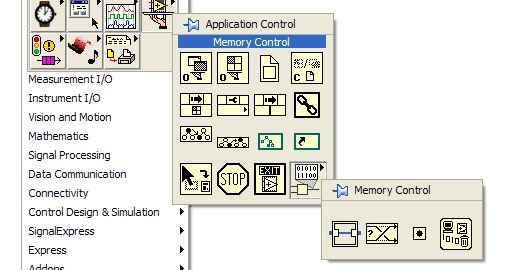- Subscribe to RSS Feed
- Mark Topic as New
- Mark Topic as Read
- Float this Topic for Current User
- Bookmark
- Subscribe
- Mute
- Printer Friendly Page
Writing 2D double precision data to binary file broke upgrading from 8.2.1 to 8.5?
09-28-2007 02:20 PM
- Mark as New
- Bookmark
- Subscribe
- Mute
- Subscribe to RSS Feed
- Permalink
- Report to a Moderator
09-28-2007 04:39 PM
- Mark as New
- Bookmark
- Subscribe
- Mute
- Subscribe to RSS Feed
- Permalink
- Report to a Moderator
09-28-2007 05:48 PM
- Mark as New
- Bookmark
- Subscribe
- Mute
- Subscribe to RSS Feed
- Permalink
- Report to a Moderator
09-28-2007 06:17 PM - edited 09-28-2007 06:17 PM
- Mark as New
- Bookmark
- Subscribe
- Mute
- Subscribe to RSS Feed
- Permalink
- Report to a Moderator
There is some memory issue with the output of the transpose array where the data is corrupted.

Message Edited by Matthew Kelton on 09-28-2007 06:17 PM
09-28-2007 06:28 PM - edited 09-28-2007 06:28 PM
- Mark as New
- Bookmark
- Subscribe
- Mute
- Subscribe to RSS Feed
- Permalink
- Report to a Moderator
Message Edited by Matthew Kelton on 09-28-2007 06:29 PM
09-28-2007 07:19 PM
- Mark as New
- Bookmark
- Subscribe
- Mute
- Subscribe to RSS Feed
- Permalink
- Report to a Moderator
09-28-2007 07:40 PM - edited 09-28-2007 07:40 PM
- Mark as New
- Bookmark
- Subscribe
- Mute
- Subscribe to RSS Feed
- Permalink
- Report to a Moderator

Message Edited by altenbach on 09-28-2007 05:42 PM
09-29-2007 08:05 AM
- Mark as New
- Bookmark
- Subscribe
- Mute
- Subscribe to RSS Feed
- Permalink
- Report to a Moderator
Always copy??
It is new.. Can you elaborate on this one (no longer have access to 8.5 😞 )
09-29-2007 11:44 AM - edited 09-29-2007 11:44 AM
- Mark as New
- Bookmark
- Subscribe
- Mute
- Subscribe to RSS Feed
- Permalink
- Report to a Moderator

Message Edited by altenbach on 09-29-2007 09:45 AM
09-29-2007 12:16 PM
- Mark as New
- Bookmark
- Subscribe
- Mute
- Subscribe to RSS Feed
- Permalink
- Report to a Moderator
Just recently I reported a similar bug in LV 8.5 to NI. If you write an array of SGL/DBL to disk using "Write to Binary File" in big-endian format it works as expected. But if you use an index array function (e.g. to extract a row/column) of a 2D-array and wire it's output to "Write to Binary File" it will always save in little-endian format. To test, you can just use build array and index array in a row.
A workaround is to use flatten to string first and write the string to the binary file.
Daniel
